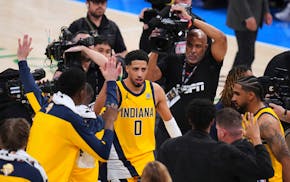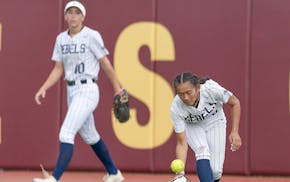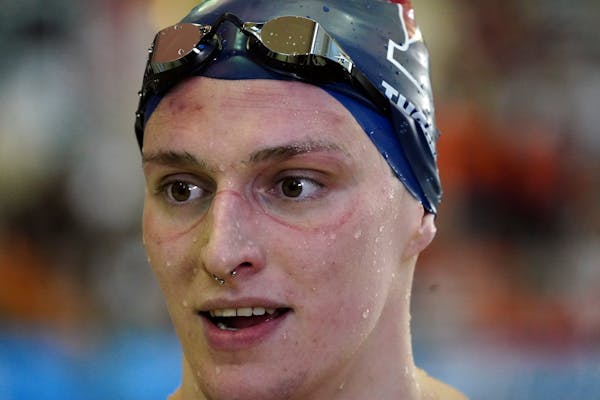NCAA President Mark Emmert couldn't help but hear the outcry last spring: The top governing body of college sports isn't being fair to women, critics contended.
The evidence presented began with a video showing the disparities between the weight rooms used for the 2021 NCAA men's basketball tournament vs. what was prepared for the women's tournament. It continued with a study the NCAA commissioned that showed it spent an estimated $35 million more on the men's tournament than the women's tournament last year.
On Wednesday, Emmert — in Minneapolis for the women's Final Four — held a news conference at Target Center and offered a response which basically said: We're addressing the issues, we've made some changes, but it's going to take time.
"None of us, of course, were happy at all with the outcomes of last year," Emmert said. "We went through a great deal of hard work, first of all, understanding what transpired last year and … where we need to make appropriate investments in time and energy and money and people to make sure that the women who play basketball are provided with the same kind of experiences as the men are."
Adjustments to the women's tournament included the expansion of the field to 68 teams, creating a "First Four" format in which two winners advance into the standard field of 64, as is the case in the men's tournament. Selection Sunday was held on the same day as the men, aiming to attract more viewers. On-site facilities and amenities have been made more equitable.
The NCAA also is using the tournament's nickname, "March Madness," for both the men's and women's tournaments.
"We saw visibly the enhancements of the championship with the use of March Madness, with the increased branding," said Lynn Holzman, vice president for NCAA women's basketball, who joined Emmert for the news conference. "Even as you just look at the city of Minneapolis and this venue, you see the results of those efforts."
An area in which Emmert hopes the NCAA can improve the women's basketball tournament is its TV rights, which expire after the 2023-24 season. The current contract with ESPN covers 24 sports and was signed in 2011.
"It's obviously in everyone in college sports' best interests to maximize a revenue that you can produce from media contracts, while recognizing you want to balance that with making sure you get the right coverage, too," Emmert said.
This year's women's Final Four — which features Louisville vs. South Carolina at 6 p.m. Friday and Connecticut vs. Stanford at 8:30, with the semifinal winners meeting at 7 p.m. Sunday — is expected to be a sellout, Holzman said. The Final Four sold out in seven of the eight seasons before the coronavirus pandemic wiped out the 2020 event and limited attendance at the 2021 version in San Antonio.
Next year, the women's tournament format will change, with the final 16 teams divided into two eight-team regionals instead of four four-team pods. The move is designed to increase broadcast coverage along with improving the experience for the student-athletes.
"Two regional sites, eight teams being at each site, was to put us in a position that we could immerse ourselves in a community for multiple days and in a way that we could bring elements of the women's Final Four to the regional sites," Holzman said.
Last year's look was a black eye for the NCAA, and Emmert spoke of the self-analysis that the organization was prompted to do.
"We certainly still know that we've got a ways to go," he said. "This is not a finished task or anything remotely close to it."

Vikings GM talks to the Star Tribune about the team's 2025 outlook, McCarthy's trajectory

Podcast: How the Pacers taught the Thunder (and the Wolves) a playoff lesson

